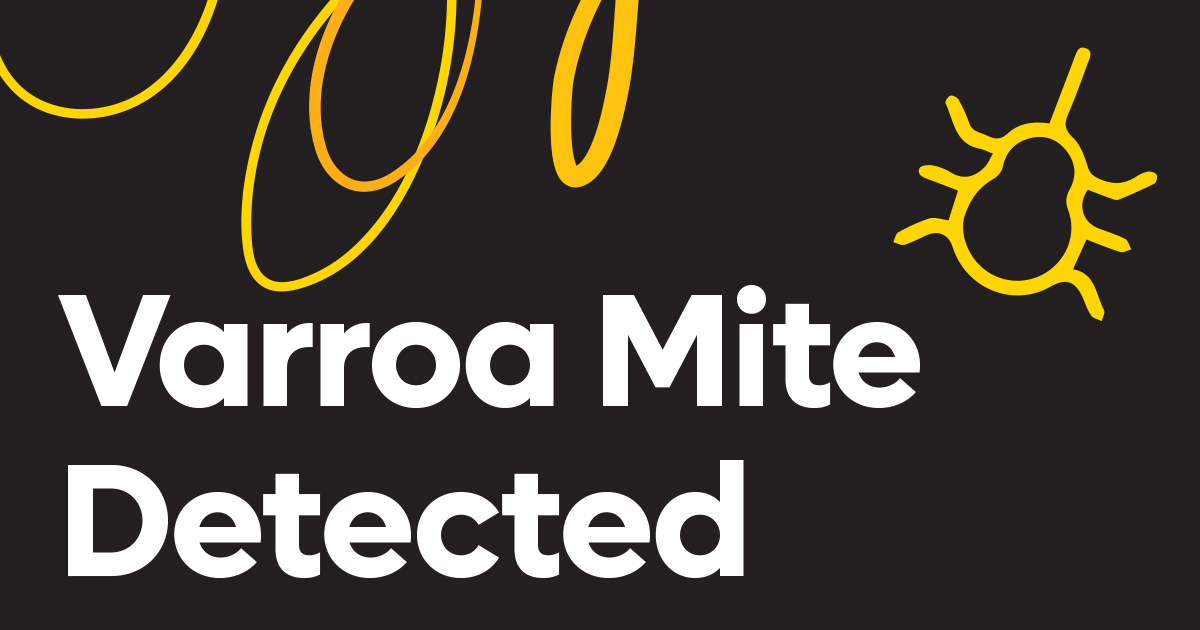New Infested Premises Identified Near Calga
4 July 2022On Wednesday the 22nd June an initial detection of Varroa mite was found in sentinel hives at the port of Newcastle (infected premises (IP) 1, 2 and 3). A second confirmed detection in a commercial load of bees occurred within 10km on Saturday 25th June near Calga south of Newcastle (IP4).

NSW DPI, with the assistance of volunteer beekeepers, have identified Varroa mite in 2 beehives at a property close to the Calga premise. Properties at Bulahdelah, Seaham, Hexham and Newcastle were also confirmed to have Varroa mite present and have had eradication zones established around them – these properties were closer to the original detections and so effectively expanded that original zone.
While the zones have expanded, the delimiting surveillance and eradication response continues as all current detection have direct links to the original IPs. It is currently not considered to have escaped the emergency zone and eradication is feasible.
All the Infested Premises (IP) and emergency zones are now identified within the NSW DPI Biosecurity (Varroa mite) Emergency Order No. 5 (last updated 2/7/22).
https://www.dpi.nsw.gov.au/biosecurity/seasonal-pests-and-diseases/spring/varroa-mite
Beekeepers can check and notify NSW DPI if their hives are in any of 10km, 25km and 50km emergency zones which are here www.dpi.nsw.gov.au/varroa.
Notification can be made:
- by telephone, to the Exotic Plant Pest Hotline 1800 084 881,
- by online form at http://www.dpi.nsw.gov.au/varroa.
- by email, to hive.location@emergency.dpi.nsw.gov.au.
If anyone in NSW has found Varroa mite, they must tell NSW DPI immediately.
Targeted treatment of beehives combined with baiting programs within the 10km eradication emergency zones will be undertaken to eradicate Varroa mite. Eradication will also be undertaken for known feral colonies in the surveillance emergency zones.
NSW DPI will conduct ongoing surveillance of managed colonies within the surveillance emergency zones to ensure the spread of Varroa mite is prevented.
Beekeeper volunteers are being mobilized to assist with surveillance efforts however weather conditions indicate moderate flooding over the weekend which may impact operations and hives positioned in flood zones.
Preservation of equipment
AHBIC has worked closely with the DPI to develop a strategy that is focused on preserving boxes and equipment where the bees have been euthanised. This is a risk based approach that will allow the majority of beekeepers to retain their boxes, pallets, excluders, lids etc in the eradication zone. Bees and frames will be destroyed as the risk of retaining the frames is too high.
A group permit for movement of hives in flood affected areas has been released.
Control center operations are ramping up and interstate department arrangements activated to assist in the emergency management response.
The NSW statewide stand still order is still in place and will remain until the Varroa mite is contained. AHBIC is working incredibly hard for industry to ensure the standstill order is in place for as short a time as possible.
Please ensure you remain updated with the latest information by looking on the NSW DPI website: www.dpi.nsw.gov.au/varroa
